
MILLENNIALS ARE FINALLY READY TO BUY HOMES
BY KAREN LEBLANC
Wade and Andrea just bought their first home. He’s 29 and she’s 27, and they’ve been married for three years. “My parents bought their first home right after they were married, and when they were much younger,” Andrea says. “It was the right decision for them, at the time. But we thought it was smarter to wait.”
Wade and Andrea (not their real names) met when they were both students at the University of Central Florida. It was at the beginning of the economic collapse, which decimated real estate values and fundamentally changed the way millennials thought about homeownership.
“When my parents were younger, everybody thought buying a home was the safest, smartest investment you could make,” Andrea added. “But when Wade and I got married, we were in no hurry. We’d seen what could happen.”
Not only had memories of the Great Recession made them skittish, but both had student debt and neither had a job that felt entirely secure. So they rented an apartment, tried to live frugally and started saving.
They closed on a new home in west Orange County in February. So, what changed?
“The economy seemed to be strong and sustainable,” Andrea says. “Home values seemed to be going up, but not in a crazy way. And interest rates were so low that we realized we were really spending as much or more renting, and not building any equity.”
Wade and Andrea — he’s an attorney and she works in public relations — figure that witnessing the nasty downturn ultimately made them more cautious and savvy buyers. They did more homework, visited more model centers and negotiated with more determination than they would have otherwise.
“We tried not to fall in love with a house,” Andrea says. “We made it clear that we were willing to walk away at any time.” When they made a decision to buy — and got the price they wanted — the couple was able to get a favorable mortgage loan because they had good credit, and had saved enough to put 20 percent down.
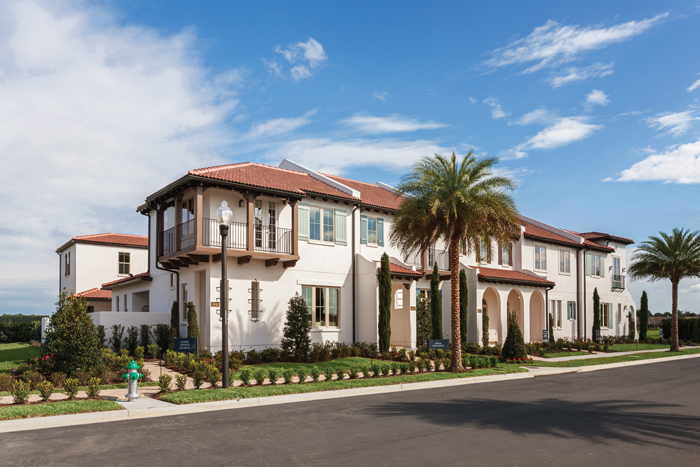
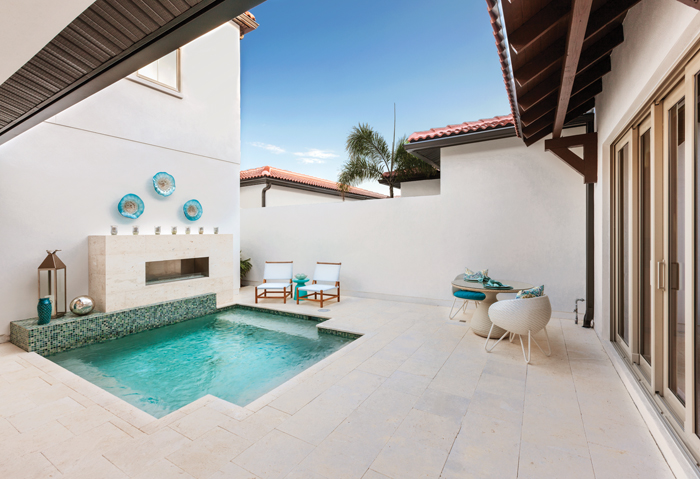
Toll Brothers’ newest community, Lakeshore in Horizon West, is targeting millennials with features such as open floorplans with large living and dining areas, bonus rooms for entertaining, and attached garages and private outdoor areas.
“We’re happy with our decision so far,” says Andrea. “Even with everything that happened when the economy tanked, we think this will be a good investment in the long run. But more than that, we’ve got a place to call our own. I guess that’ll always be a big plus for people in our situation.”
Millennials — defined as people born between 1981 and 1997 — are doing everything a little later than their parents did, opting for a more cautious approach to life-altering commitments and investments. But now, at long last, they’re entering the market as first-time homebuyers.
And that’s good news for homebuilders. Numbering approximately 77 million, millennials are the largest consumer group in the U.S., with buying power estimated at $200 billion annually. That makes them highly desirable consumers.
But, like Wade and Andrea, they’re not pushovers.
“We know that millennials are getting married later, having children later and establishing roots in a community later,” says Ken Thirtyacre, Central Florida division president for Toll Brothers. “But we’re confident this demographic will continue to be strong for decades to come.”
Toll’s newest community, Lakeshore, is targeting millennials with five townhome designs priced from the upper $200s. The homes have all the features that researchers say millennials want: open floorplans with large living and dining areas, outdoor spaces and bonus rooms for entertaining, and attached garages for convenience and storage.
Across Central Florida, homebuilders are retooling their product lines and offering adaptable floorplans that are able to meet the present and future lifestyle needs of millennials. These flexible designs can “grow” with millennial homeowners as their needs change.
“Millennials want rooms that can be used for a variety of things instead of being designated for one singular purpose, such as a stand-alone dining room,” says Brent Bartholomew, Central Florida division president for David Weekley Homes. “They’ll choose lifestyle and ease of function over huge rooms and heavy indoor or outdoor maintenance.”
Weekly is building in Laureate Park at Lake Nona on 30-foot-wide homesites. The smaller footprint means less lawn maintenance, Bartholomew says. Plus, Laureate Park is built around the health-sciences complex known as Medical City, meaning it’s close to major employers.
Millennials also like the community’s high-tech features, such as LED streetlights and charging stations for electric cars. Laureate Park is also part of Lake Nona’s aptly named Collaborative Learning Environment (CLE), which was conceived by the Lake Nona Education Initiative.
The CLE began in 2007 as a consortium of 70 education professionals representing more than 30 institutions working to design a thoroughly modern education system for the master-planned community. The idea was to allow students and residents to have real-time interactions with researchers, doctors, professors and even businesses, both within Lake Nona and around the world.
In addition, the CLE launched a partnership with Promethean, a global leader in classroom technology, to make Lake Nona an example of how innovative learning technologies, such as the interactive whiteboard, can be used to create a community where classrooms, offices and homes are seamlessly connected.
That’s a program that tech-savvy millennials can get excited about.
I recently toured two prototype millennial homes in Henderson, Nevada, during the 2016 National Association of Homebuilders International Builders’ Show (IBS) that featured “Gen-Smart Suites,” with kitchenettes, dedicated bathrooms and private entrances. The suites can be rented out to help offset mortgage payments.
“Millennials expect to have people help pay for the cost of the home,” says Klif Andrews, president of Pardee Homes Las Vegas. “So you’ve got to make that a feature of your home, not a byproduct.”
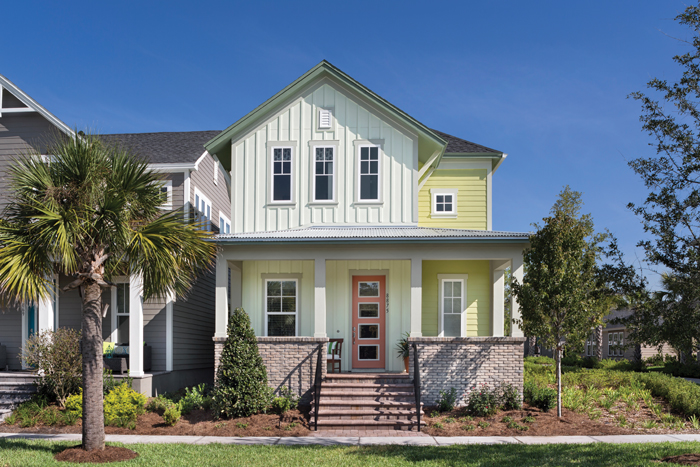
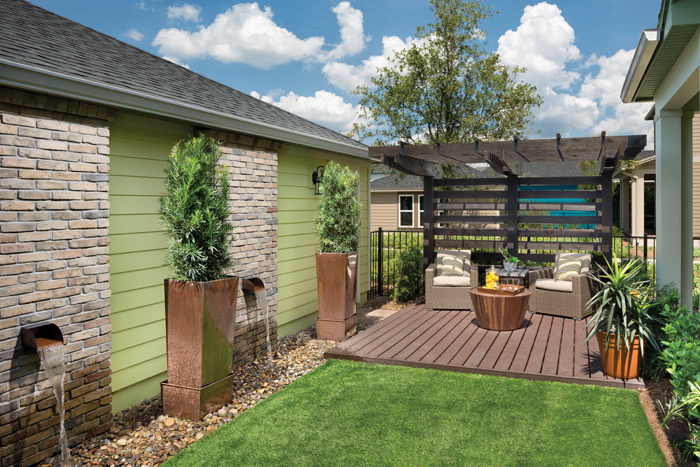
The Kahneman II (front and back shown) is one of a line built by David Weekley Homes in Laureate Park at Lake Nona. The homes appeal to millenneals in several ways: They’re on easy-to-maintain 30-foot-wide homesites, they’re near major employers and the community boasts numerous high-tech features.
Pardee designed the “Responsive Homes” based on research exploring millennial homebuyer preferences conducted by Ketchum Global Research and Analytics. “This generation is all about Uber, Lift and Airbnb,” Andrews says. “As active participants in the new ‘sharing economy,’ millennials have figured out how to save money and generate revenue.”
Millennials aren’t necessarily looking for a lot of storage space and big closets because “they’re not acquirers,” Andrews says. Instead, they want “open spaces, fun design features and great relationships with the outdoors.”
Having plenty of choices is another important factor in attracting millennial homebuyers, says Cara Kane of KB Home. The company, like other production builders, now offers more customization options for today’s choosier millennials.
“Millennial buyers are price conscious and environmentally conscious,” adds Kane. “They want homes that include a variety of energy and water-efficient features.”
A sense of community also ranks high on the millennial must-have list. “Millennials want the low-maintenance lifestyle that comes with living in a great location close to urban amenities,” says Bartholomew.
Thirtyacre agrees: “We also find that millennials are seeking a certain community environment,” he says. That’s why Toll is developing communities that incorporate walking trails, multiple parks for small children, fitness centers with yoga studios, and gathering places for friends and neighbors.
“Plus, many of our communities provide exterior yard maintenance, offering our millennial homeowners even more time to enjoy social and leisure activities,” adds Thirtyacre.
Access to alternative modes of transportation, such as rail and bus, also factor into millennial purchasing decisions, as does proximity to retail, restaurants and recreation.
Contrary to popular belief, many millennials are happy to move to master-planned communities in the suburbs, as long as those communities offer a homey feel and plenty of amenities. “There’s a sense of comfort and familiarity that millennials have with the suburbs, since that’s often where they were raised and grew up,” says Kane.
“One thing that came through loud and clear in our research is that Millennials are multigenerational,” notes Andrews. “They love their parents. They love other generations. They don’t want to be locked off with a bunch of thirtysomethings. So I don’t think you want to create entire neighborhoods that are only designed for millennials.”
As they redefine the starter-home floorplan, millennials are also putting their own style stamp on interior décor and finishes. Customization is their design creed as they seek to create personal, authentic spaces with bold colors and whimsical touches. They don’t like the heavily embellished, traditional décor of previous generations, Andrews says.
Interior designer Bobby Berk, himself a millennial, decorated the two Responsive Homes that I toured. What impressed me most was the unapologetic use of color and seamless sweeps of material that flow indoors and outdoors.
Millennial consumers are well-informed, well-versed in social media and they do their homework before making a purchase. They don’t want to be “sold” on something; they want to be educated and empowered to make their own decisions.
Says Bartholomew: “They want to learn and be a part of the end result. Instead of simply selling them a home, we’re teaching them about the whole process along the way.”
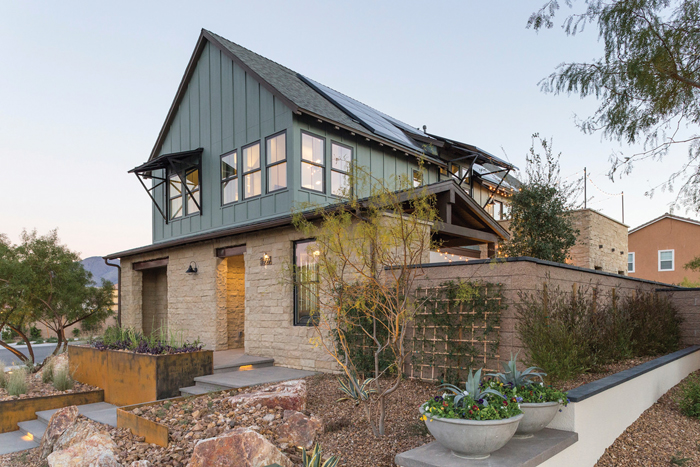
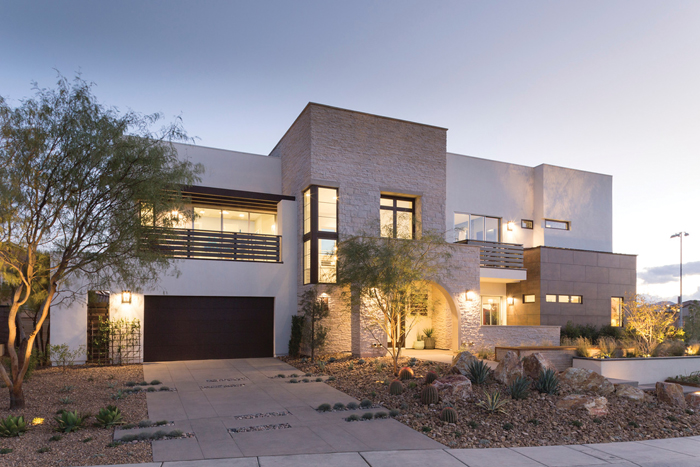
At the International Builders Show in Las Vegas, two prototype “Responsive Homes” aimed at the millennial market were on display. The Contemporary Transitional home has 3,194 square feet with four bedrooms, three and a half bathrooms and a casita behind the garage. The casita has a covered private patio, a small kitchen, a full bathroom and an optional adjoining fitness room. At 2,145-square-feet, the Contemporary Farmhouse (top) features three to four bedrooms with three and a half to four and a half bathrooms, plus an optional 384-square-foot flat over the garage. In addition, this home has a smartly designed downstairs bedroom suite with a full bath, kitchenette and an outside entrance.
